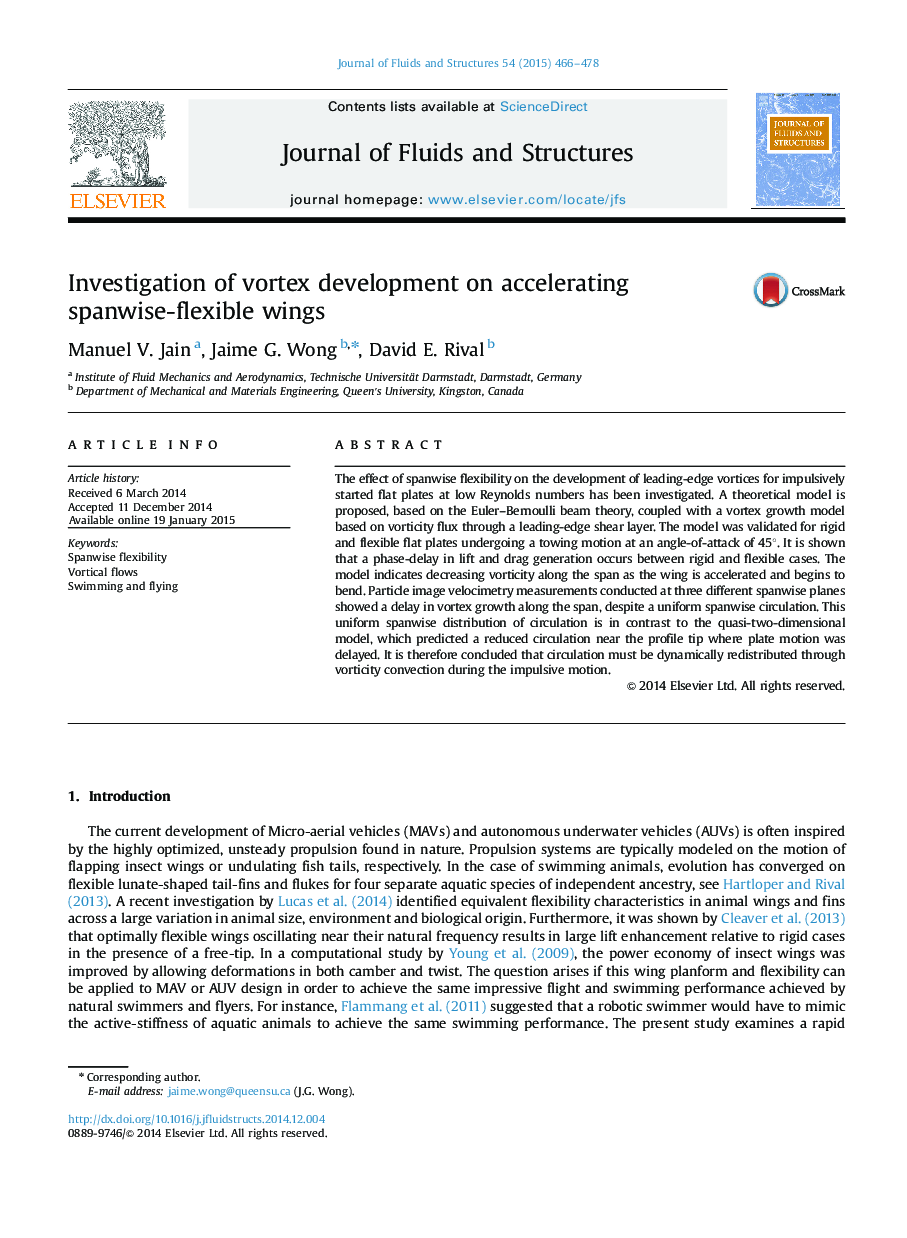| Article ID | Journal | Published Year | Pages | File Type |
|---|---|---|---|---|
| 7175977 | Journal of Fluids and Structures | 2015 | 13 Pages |
Abstract
The effect of spanwise flexibility on the development of leading-edge vortices for impulsively started flat plates at low Reynolds numbers has been investigated. A theoretical model is proposed, based on the Euler-Bernoulli beam theory, coupled with a vortex growth model based on vorticity flux through a leading-edge shear layer. The model was validated for rigid and flexible flat plates undergoing a towing motion at an angle-of-attack of 45°. It is shown that a phase-delay in lift and drag generation occurs between rigid and flexible cases. The model indicates decreasing vorticity along the span as the wing is accelerated and begins to bend. Particle image velocimetry measurements conducted at three different spanwise planes showed a delay in vortex growth along the span, despite a uniform spanwise circulation. This uniform spanwise distribution of circulation is in contrast to the quasi-two-dimensional model, which predicted a reduced circulation near the profile tip where plate motion was delayed. It is therefore concluded that circulation must be dynamically redistributed through vorticity convection during the impulsive motion.
Keywords
Related Topics
Physical Sciences and Engineering
Engineering
Mechanical Engineering
Authors
Manuel V. Jain, Jaime G. Wong, David E. Rival,
